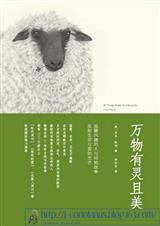�����ʷӢ�İ�_�ȶ�������ɭ-��89��
�������Ϸ���� �� �� �� �ɿ������·�ҳ���������ϵ� Enter ���ɻص�����Ŀ¼ҳ���������Ϸ���� �� �ɻص���ҳ������
��������δ�Ķ��ꣿ������ǩ�ѱ��´μ����Ķ���
oned��and��others��where��blunt��axes��were��brought��to��be��resharpened��
olorgesailie��was����in��short����a��kind��of��factory����one��that��stayed��in��business��for��a��million��years��
various��replications��have��shown��that��the��axes��were��tricky��and��labor��intensive��objects��tomake—even��with��practice����an��axe��would��take��hours��to��fashion—and��yet����curiously����they��werenot��particularly��good��for��cutting��or��chopping��or��scraping��or��any��of��the��other��tasks��to��whichthey��were��presumably��put����so��we��are��left��with��the��position��that��for��a��million��years—far����farlonger��than��our��own��species��has��even��been��in��existence����much��less��engaged��in��continuous cooperative��efforts—early��people��came��in��considerable��numbers��to��this��particular��site��to��makeextravagantly��large��numbers��of��tools��that��appear��to��have��been��rather��curiously��pointless��
and��who��were��these��people����we��have��no��idea��actually����we��assume��they��were��homoerectus��because��there��are��no��other��known��candidates����which��means��that��at��their��peak—theirpeak��—the��olorgesailie��workers��would��have��had��the��brains��of��a��modern��infant����but��there��is��nophysical��evidence��on��which��to��base��a��conclusion����despite��over��sixty��years��of��searching����nohuman��bone��has��ever��been��found��in��or��around��the��vicinity��of��olorgesailie����however��muchtime��they��spent��there��shaping��rocks����it��appears��they��went��elsewhere��to��die��
“it’s��all��a��mystery��”��jillani��ngalli��told��me����beaming��happily��
the��olorgesailie��people��disappeared��from��the��scene��about��200��000��years��ago��when��the��lakedried��up��and��the��rift��valley��started��to��bee��the��hot��and��challenging��place��it��is��today����butby��this��time��their��days��as��a��species��were��already��numbered����the��world��was��about��to��get��itsfirst��real��master��race����homo��sapiens������things��would��never��be��the��same��again��
wwW、
Goodbye
in��the��early��1680s����at��just��about��the��time��that��edmond��halley��and��his��friends��christopherwren��and��robert��hooke��were��settling��down��in��a��london��coffeehouse��and��embarking��on��thecasual��wager��that��would��result��eventually��in��isaac��newton’s��principia������henry��cavendish’sweighing��of��the��earth����and��many��of��the��other��inspired��and��mendable��undertakings��thathave��occupied��us��for��much��of��the��past��four��hundred��pages����a��rather��less��desirable��milestonewas��being��passed��on��the��island��of��mauritius����far��out��in��the��indian��ocean��some��eight��hundredmiles��off��the��east��coast��of��madagascar��
there����some��forgotten��sailor��or��sailor’s��pet��was��harrying��to��death��the��last��of��the��dodos����thefamously��flightless��bird��whose��dim��but��trusting��nature��and��lack��of��leggy��zip��made��it��a��ratherirresistible��target��for��bored��young��tars��on��shore��leave����millions��of��years��of��peaceful��isolationhad��not��prepared��it��for��the��erratic��and��deeply��unnerving��behavior��of��human��beings��
we��don’t��know��precisely��the��circumstances����or��even��year����attending��the��last��moments��of��thelast��dodo����so��we��don’t��know��which��arrived��first����a��world��that��contained��a��principia��or��one��thathad��no��dodos����but��we��do��know��that��they��happened��at��more��or��less��the��same��time����you��wouldbe��hard��pressed����i��would��submit����to��find��a��better��pairing��of��occurrences��to��illustrate��the��divineand��felonious��nature��of��the��human��being—a��species��of��organism��that��is��capable��of��unpickingthe��deepest��secrets��of��the��heavens��while��at��the��same��time��pounding��into��extinction����for��nopurpose��at��all����a��creature��that��never��did��us��any��harm��and��wasn’t��even��remotely��capable��ofunderstanding��what��we��were��doing��to��it��as��we��did��it����indeed����dodos��were��so��spectacularlyshort��on��insight����it��is��reported����that��if��you��wished��to��find��all��the��dodos��in��a��vicinity��you��hadonly��to��catch��one��and��set��it��to��squawking����and��all��the��others��would��waddle��along��to��see��whatwas��up��
the��indignities��to��the��poor��dodo��didn’t��end��quite��there����in��1755����some��seventy��years��afterthe��last��dodo’s��death����the��director��of��the��ashmolean��museum��in��oxford��decided��that��theinstitution’s��stuffed��dodo��was��being��unpleasantly��musty��and��ordered��it��tossed��on��abonfire����this��was��a��surprising��decision��as��it��was��by��this��time��the��only��dodo��in��existence��stuffed��or��otherwise����a��passing��employee����aghast����tried��to��rescue��the��bird��but��could��save��onlyits��head��and��part��of��one��limb��
as��a��result��of��this��and��other��departures��from��mon��sense����we��are��not��now��entirely��surewhat��a��living��dodo��was��like����we��possess��much��less��information��than��most��people��suppose—ahandful��of��crude��descriptions��by��“unscientific��voyagers����three��or��four��oil��paintings����and��a��fewscattered��osseous��fragments��”��in��the��somewhat��aggrieved��words��of��the��nineteenth��centurynaturalist��h����e����strickland����as��strickland��wistfully��observed����we��have��more��physical��evidenceof��some��ancient��sea��monsters��and��lumbering��saurapods��than��we��do��of��a��bird��that��lived��intomodern��times��and��required��nothing��of��us��to��survive��except��our��absence��
so��what��is��known��of��the��dodo��is��this����it��lived��on��mauritius����was��plump��but��not��tasty����andwas��the��biggest��ever��member��of��the��pigeon��family����though��by��quite��what��margin��is��unknownas��its��weight��was��never��accurately��recorded����extrapolations��from��strickland’s��“osseous fragments”��and��the��ashmolean’s��modest��remains��show��that��it��was��a��little��over��two��and��a��halffeet��tall��and��about��the��same��distance��from��beak��tip��to��backside����being��flightless����it��nested��onthe��ground����leaving��its��eggs��and��chicks��tragically��easy��prey��for��pigs����dogs����and��monkeysbrought��to��the��island��by��outsiders����it��was��probably��extinct��by��1683��and��was��most��certainlygone��by��1693����beyond��that��we��know��almost��nothing��except��of��course��that��we��will��not��see��itslike��again����we��know��nothing��of��its��reproductive��habits��and��diet����where��it��ranged����what��soundsit��made��in��tranquility��or��alarm����we��don’t��possess��a��single��dodo��egg��
from��beginning��to��end��our��acquaintance��with��animate��dodos��lasted��just��seventy��years����thatis��a��breathtakingly��scanty��period—though��it��must��be��said��that��by��this��point��in��our��history��wedid��have��thousands��of��years��of��practice��behind��us��in��the��matter��of��irreversible��eliminations��
nobody��knows��quite��how��destructive��human��beings��are����but��it��is��a��fact��that��over��the��last��fiftythousand��years��or��so��wherever��we��have��gone��animals��have��tended��to��vanish����in��oftenastonishingly��large��numbers��
in����america������thirty����genera����of����large����animals—some��very��large��indeed—disappearedpractically��at��a��stroke��after��the��arrival��of��modern��humans��on��the��continent��between��ten��andtwenty��thousand��years��ago����altogether��north��and��south��america��between��them��lost��aboutthree��quarters��of��their��big��animals��once��man��the��hunter��arrived��with��his��flint��headed��spearsand��keen��organizational��capabilities����europe��and��asia����where��the��animals��had��had��longer��toevolve��a��useful��wariness��of��humans����lost��between��a��third��and��a��half��of��their��big��creatures��
australia����for��exactly��the��opposite��reasons����lost��no��less��than��95��percent��
because��the��early��hunter��populations��were��paratively��small��and��the��animal��populationstruly��monumental—as��many��as��ten��million��mammoth��carcasses��are��thought��to��lie��frozen��in��thetundra��of��northern��siberia��alone—some��authorities��think��there��must��be��other��explanations��possibly��involving��climate��change��or��some��kind��of��pandemic����as��ross��macphee��of��theamerican��museum��of��natural��history��put��it����“there’s��no��material��benefit��to��huntingdangerous��animals��more��often��than��you��need��to—there��are��only��so��many��mammoth��steaksyou��can��eat��”��others��believe��it��may��have��been��almost��criminally��easy��to��catch��and��clobberprey����“in��australia��and��the��americas��”��says��tim��flannery����“the��animals��probably��didn’t��knowenough��to��run��away��”
some��of��the��creatures��that��were��lost��were��singularly��spectacular��and��would��take��a��littlemanaging��if��they��were��still��around����imagine��ground��sloths��that��could��look��into��an��upstairswindow����tortoises��nearly��the��size��of��a��small��fiat����monitor��lizards��twenty��feet��long��baskingbeside��desert��highways��in��western��australia����alas����they��are��gone��and��we��live��on��a��muchdiminished��planet����today����across��the��whole��world����only��four��types��of��really��hefty����a��metric��tonor��more����land��animals��survive����elephants����rhinos����hippos����and��giraffes����not��for��tens��of��millionsof��years��has��life��on��earth��been��so��diminutive��and��tame��
the��question��that��arises��is��whether��the��disappearances��of��the��stone��age��and��disappearancesof��more��recent��times��are��in��effect��part��of��a��single��extinction��event—whether����in��short����humansare��inherently��bad��news��for��other��living��things����the��sad��likelihood��is��that��we��may��well��be��
according��to��the��university��of��chicago��paleontologist��david��raup����the��background��rate��ofextinction��on��earth��throughout��biological��history��has��been��one��species��lost��every��four��yearson��average����according��to��one��recent��calculation����human��caused��extinction��now��may��berunning��as��much��as��120��000��times��that��level��
in��the��mid��1990s����the��australian��naturalist��tim��flannery����now��head��of��the��south��australianmuseum��in��adelaide����became��struck��by��how��little��we��seemed��to��know��about��many extinctions����including��relatively��recent��ones����“wherever��you��looked����there��seemed��to��be��gapsin��the��records—pieces��missing����as��with��the��dodo����or��not��recorded��at��all��”��he��told��me��when��imet��him��in��melbourne��a��year��or��so��ago��
flannery��recruited��his��friend��peter��schouten����an��artist��and��fellow��australian����and��togetherthey��embarked��on��a��slightly��obsessive��quest��to��scour��the��world’s��major��collections��to��find��outwhat��was��lost����what��was��left����and��what��had��never��been��known��at��all����they��spent��four��yearspicking��through��old��skins����musty��specimens����old��drawings����and��written��descriptions—whatever��was��available����schouten��made��life��sized��paintings��of��every��animal��they��couldreasonably��re��create����and��flannery��wrote��the��words����the��result��was��an��extraordinary��bookcalled��a��gap��in��nature����constituting��the��most��plete—and����it��must��be��said����moving—catalog��of��animal��extinctions��from��the��last��three��hundred��years��
for��some��animals����records��were��good����but��nobody��had��done��anything��much��with��them��sometimes��for��years����sometimes��forever����steller’s��sea��cow����a��walrus��like��creature��related��tothe��dugong����was��one��of��the��last��really��big��animals��to��go��extinct����it��was��truly��enormous—anadult��could��reach��lengths��of��nearly��thirty��feet��and��weigh��ten��tons—but��we��are��acquainted��withit��only��because��in��1741��a��russian��expedition��happened��to��be��shipwrecked��on��the��only��placewhere��the��creatures��still��survived��in��any��numbers����the��remote��and��foggy��mander��islandsin��the��bering��sea��
happily����the��expedition��had��a��naturalist����georg��steller����who��was��fascinated��by��the��animal��
“he��took��the��most��copious��notes��”��says��flannery����“he��even��measured��the��diameter��of��itswhiskers����the��only��thing��he��wouldn’t��describe��was��the��male��genitals—though����for��somereason����he��was��happy��enough��to��do��the��female’s����he��even��saved��a��piece��of��skin����so��we��had��agood��idea��of��its��texture����we��weren’t��always��so��lucky��”
the��one��thing��steller��couldn’t��do��was��save��the��sea��cow��itself����already��hunted��to��the��brinkof��extinction����it��would��be��gone��altogether��within��twenty��seven��years��of��steller’s��discovery��ofit����many��other��animals����however����couldn’t��be��included��because��too��little��is��known��about��them��
the��darling��downs��hopping��mouse����chatham��islands��swan����ascension��island��flightless��crake��at��least��five��types��of��large��turtle����and��many��others��are��forever��lost��to��us��except��as��names��
a��great��deal��of��extinction����flannery��and��schouten��discovered����hasn’t��been��cruel��o

